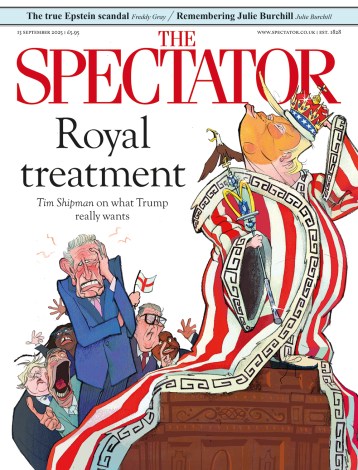The central question in Brenna Hassett’s book, put simply, is: why are our children so very useless for so very long? Or: ‘What is the possible adaptive value of teenagers?’ If we consider maturity, or adulthood, to be the point at which an animal can play its own role in the evolutionary process – i.e. have its own babies – why is it that we have evolved to mature so slowly; and, even when mature, to delay having children until many years after we’re first physically capable of doing so?
The framework in which Hassett sets out to answer this is one to do with investment and return on investment. An animal invests energy in growing its young. Sometimes that energy is front-loaded in gestation: infant giraffes come out more or less fully baked, or precocial, and are making their knock-kneed way across the savannah soon after birth. In other species, infants are altricial: they come out like baby rats or baby humans, helpless. They need care and feeding. They can’t be trusted to cross busy roads, sweep chimneys or hunt mammoths for ages. They’re sitting ducks for sabre-toothed tigers. Considerable investment of time and energy in growing them to physical maturity (not to mention the opportunity cost of not being able to procreate for a bit) is made by the parents after birth.
Some animals spread their bets – giving birth to very many infants in the hopes that enough survive to breed. Some, like us, tend to bet the farm on a relatively small number. Seasonal scarcity of food, the presence of predators and all sorts of other factors affect when and how animals mate and give birth, how long they care for their children, and when those children start making children of their own. With a wide range of reference, Hassett sets out to put our human investment strategies in their evolutionary context.
Discoveries in the fossil record – the author’s home turf as an academic bioarchaeologist at UCL – help to fill in the picture. It turns out that teeth come in on a predictable timetable, and striations on them are a good indicator of chronological age; while bone growth can tell you about where a given primate is in terms of life-phase maturity. Put the two together and, bam, you can discover that Neanderthal childhood was shorter than that of Hom sap. Was that the key to our world-conquering success?
Infant giraffes, born almost fully formed, are soon making their knock-kneed way across the savannah
Our big brains and our gregarious nature, Hassett suggests, are the main drivers of our strange long infancies. Even after we’ve stopped investing so much physical or nutritional capital in our offspring we invest – to a degree no other animal does – in social capital. Children have a lot to learn, and once they become a bit mobile, they have a lot of people to learn it from. It takes a village. And they play not just because it’s fun, but because it’s adaptive. Play is learning – for a child as for a chimpanzee. But unlike the chimpanzee, for symbol-using animals culture starts to take a role. To quote a great man: education, education, education.
There’s a lovely description of a schoolboy’s tribulations in the edubba or ‘tablet house’, paraphrased from an essay of reminiscence known as ‘Schooldays’, dating from 1800 BC Mesopotamia:
After he gets his packed lunch from his mother and sets off for school, everything seems to go wrong: the hall monitor beats him for being in the wrong place, another teacher beats him for tying his shirt up wrong, the Sumerian teacher beats him for speaking Akkadian and his cuneiform teacher beats him for just being terrible at cuneiform.
Plus ça change.
And here’s a part of the story that’s especially odd. Almost no other species of animal, Hassett says, including our primate cousins, outlives its reproductive usefulness. And, when you think about it, why would they? Yet human females usually stop being fertile by the age of 50 – and will live on for another two or three decades. (Only orcas and short-finned pilot whales have the same quirk.) The suggestion is that grandma is adaptive. It’s easier for mum to go back to work, forage for food or have more babies if she has her own mother there to mind the kids – so grandma contributes to the reproductive fitness of her genetic line even at the cost of 100,000 years of mother-in-law jokes.
Speaking of jokes, I should warn that Hassett doesn’t walk the pop-academic tightrope all that adroitly. Her story frequently contains dense information-dumps about, say, the differences in testicle weight as a percentage of total bodyweight across different species of primate, foetal skull-size as compared to birth-canal diameter, or the fat-to-water ratios in various mammals’ milk. And these are made harder rather than easier to navigate by her endless facetious asides. A mention of human vanity prompts a wearying riff on the Carly Simon song, we meet ‘celebrity teenage pharaoh Tutankhamun’, and a mention of Dr Spock earns a jocular parenthesis: ‘The paediatrician not the Vulcan.’ More than half the footnotes say things like: ‘Forty-two might be the answer to life, the universe, and everything, but I tell you from experience it is two weeks too many for a pregnancy.’ I don’t think she says ‘Amirite girls?’ anywhere in the text, but I couldn’t swear to it. She needed a much more ruthless editor.
Yet Hassett knows her stuff – and a lot of that stuff is very interesting indeed. Along the way, she debunks all sorts of received wisdoms. The idea, for instance, that women’s menstrual cycles fall into sync when they live in proximity. Hassett says that this ‘seemingly unkillable myth’ just ain’t so: ‘Women might, however, synchronise the human adaptation for confirmation bias and unreliable recall that might make them think they do.’
Then there’s the widely circulated notion that the extreme painfulness and dangerousness of human birth is a unique consequence of our oversized brains and upright posture. Not so. Apparently squirrel monkeys, which have teeny-tiny brains and struggle to walk upright for more than a few paces, have an even worse time of it – as many as half of squirrel monkey babies don’t make it through the birthing process alive. Why this is, as often seems to be the case, is not so easy to explain as evolutionary old wives’ tales would have us think. Incidentally, the invention of forceps was a great boon to humans if not to squirrel monkeys in this department – though their inventor Peter Chamberlain and his heirs kept the design a trade secret for a century and profited richly from doing so.
Hassett is especially astringent when it comes to the sciencey-sounding but essentially nonsensical evo-psych theories peddled by dating coaches, faddish childcare gurus and the marketers of ‘paleo’ diet bars. Popular ideas about evolution, as she says, seem to suppose that the process stopped; or that what was adaptive in the Stone Age will still be adaptive now. Often, she says, the history of primatology and anthropology show them riddled with confirmation bias; accounts of the mating habits of primates focusing on male competition, for instance (all that chest-beating and snarling), have only relatively recently been disrupted by people starting to pay attention to the way the females strategise mate choice as well.
She takes aim too at the historians who supposed that (in Philippe Ariès’s notorious formula) ‘In medieval society, the idea of childhood did not exist’, or followed Lawrence Stone’s influential notion that as recently as the early modern period, parents didn’t feel especially affectionate towards newborn children. Whatever the ancient sources tell us about Spartans dropping tots off cliffs, she says, it’s ‘patently nonsense’ to suppose that loving your children, and mourning them when they die, is a modern invention. Look at the pet-names – ‘precious feather’ – that Aztecs gave their babies. Look at this heart-rending inscription on a headstone for an eight-month-old from Ancient Roman times: ‘Oh, had you never been born, when you were to become so loved […] much to your parents’ pain… the rose bloomed and then wilted.’
We have always loved our kids. We evolved to do so. Even when the little monsters keep us up at night. Here’s an Akkadian lullaby, set down by a scribe 4,000 years ago: ‘Little one, who dwelt in the house of darkness;/ Well, you are outside now, have seen the light of the sun./ Why are you crying, why are you yelling?/ Why didn’t you cry in there? […] As onto drinkers of wine, as onto tipplers, may sleep fall on him!’







Comments